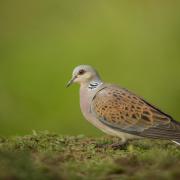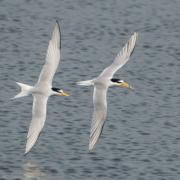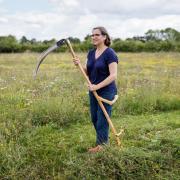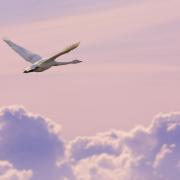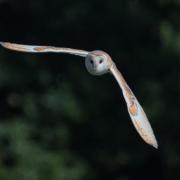Human beings are not the only species to appreciate long spells of warm, dry weather. Wildlife photographer Kevin Sawford goes in search of two stunning species

As July begins we will be at the heart of summer and our countryside should be full of butterflies. Two of these species bring a small hint of silver to their very different habitats.
The stunning silver-washed fritillary butterfly will grace a number of the region’s deciduous woodlands. Its title comes from the streaks of silver on the underside of its wings. Until recently this species was very rare to East Anglia and more associated with the southern counties of England. Now several woods have varying sized populations, including the Suffolk Wildlife Trust’s reserve at Bradfield woods, the Forestry Commission’s Theberton Wood and Dunwich Forest, plus a few privately own woodlands. The butterflies will emerge during July and will be seen on the wing for around a month. The female lays a single egg on tree bark within close proximity of the future caterpillar’s food plant, the common dog violet. The newly hatched caterpillar feeds firstly on its eggshell, then hibernates amongst crevasses in the tree bark until the following spring when it heads down to the woodland floor to feed on the violet plants.
Butterflies can be photographed during any part of the day but the early and later parts of summer days are often the best as the butterflies are less active in the cooler temperatures. My image here of the silver-washed fritillary was taken at around eight o’clock one July morning, just as the sun rose above the tree line, bathing the woodland glade in warm sunshine. The butterflies would bask to warm up, enabling me to capture images like this with wings fully spread open.
Our second ’silver’ butterfly is, in fact, blue. The silver-studded blue takes its title from the light reflective scales on the underside of its wings. This butterfly is rare to Suffolk and only found on heathland close to the east coast in an area called the Sandlings. Suffolk Wildlife Trust and other organisations have deliberately managed several of their reserves to encourage this species, including at Blaxhall and Hollesley commons and Purdis Heath. The butterfly is on the wing from late June through to early August, and the eggs overwinter until the caterpillar emerges in the spring, feeding on several varieties of heather, gorse and bird’s-foot-trefoil.
My image of the silver-studded blue was taken on Blaxhall common, late one summer evening, as it settled down to roost on this bell heather flower. As well as the right habitat, all of the region’s butterflies need the right climatic conditions to flourish. Long periods of warm dry weather are perfect. Here’s to a butterfly summer.


















